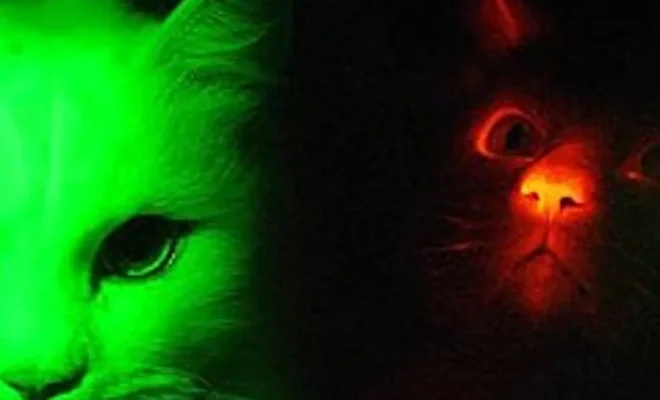Scientists create glow-in-the-dark cats

Introduction:
The scientific community is abuzz with the latest development in genetics: glow-in-the-dark cats. A team of researchers has successfully integrated a fluorescent protein into the feline genome, producing cats capable of glowing under ultraviolet light. The purpose of this groundbreaking study is to further our understanding of genetic diseases and develop new treatments for humans and animals alike.
The Science Behind Glowing Cats:
The technique employed by the scientists involves using a transgenic (genetically modified) virus to insert a gene derived from jellyfish, known as green fluorescent protein (GFP), into feline oocytes (egg cells). The oocytes are then fertilized in vitro, and the resulting embryos are implanted into surrogate mother cats. This culminates in the birth of kittens expressing the GFP gene in their skin, which makes them glow green under ultraviolet light.
Implications for Genetic Research:
The successful creation of these glow-in-the-dark cats demonstrates the feasibility of inserting foreign genes into mammalian genomes accurately and efficiently. This development has numerous implications for both animal and human healthcare. By using similar techniques, researchers can study how specific genes contribute to diseases like cancer or HIV at a molecular level.
Animal Conservation Application:
Another potential application for these brightly illuminated felines lies within wildlife conservation. By introducing fluorescent markers into endangered species, conservationists can more easily track and monitor population numbers while taking care not to disturb these animals’ natural habitats.
Ethical Considerations:
The creation of glow-in-the-dark cats raises ethical concerns around the manipulation of animal genomes. Some argue that genetically modifying animals could lead to unforeseen consequences and undermine our responsibility towards their welfare. Nevertheless, proponents of the technology highlight its potential for unlocking unprecedented advancements in disease treatment and prevention.
Conclusion:
The creation of glow-in-the-dark cats represents a watershed moment for genetic research. With the successful insertion of the GFP gene into feline genomes, scientists now have a viable model for studying gene function and disease progression that could greatly benefit both human and animal health. Although ethical considerations remain, this astonishing breakthrough could herald a new era in genetic research and revolutionize how we combat diseases in the future.




